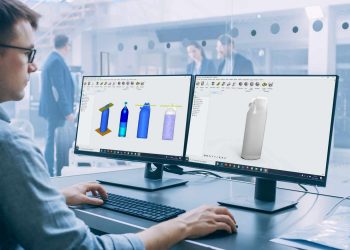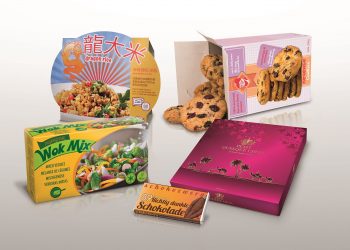Experimental study of safety, efficiency and evenness of cooking
In an extensive study of efficiency, safety and heating properties of food-packaging materials made of aluminium foil in microwave ovens, the Fraunhofer Institute for Process Engineering and Packaging has confirmed the results of previous studies conducted by other research institutes: the use of aluminium foil packaging materials in microwave ovens is safe when the general instructions for use are observed. Foods packaged in aluminium trays or in plastic containers with a laminated alufoil lid are best suited for cooking in microwave ovens and can be enjoyed without any safety reservations.
A broadly arranged series of tests focussed in particular on the parameters safety, efficiency and evenness of cooking.
Numerous tests as a basis
A total of over 200 microwave-oven tests with food in a broad variety of aluminium foil containers were conducted. Four different microwave ovens were used for each of the experiments. The tests were carried out on aluminium trays containing tapwater, egg batter, deep-frozen lasagne and minced meat. Other tests were also performed using plastic beakers and dishes containing noodle soup or children’s meals and sealed with aluminium foil or compositematerial aluminium lids.
The researchers carried out all application-oriented tests with the microwave ovens switched to full heating power. The result: not one single oven was damaged, no user was injured. Not one case of sparking in the microwave ovens was observed when the instructions were properly heeded. The tests were carried out under the general condition of use that only one tray was used for each heating run and that this tray was placed in the middle of a nonmetallic oven turntable without any contact with the walls.
User-friendly and easy to handle
“The study yielded a number of interesting results regarding the heating profile and the evenness with which the food was cooked. In some cases, these criteria were better fulfilled when the aluminium foil containers were used,“ is the comment of Thomas Pfeiffer, the responsible project director of the study. In particular, the optical appeal of a meal from a tray made of aluminium foil promises a greater culinary delight. A lasagne, for example, prepared in an aluminium container is far more appetizing because
this forms a particularly tasty crust. The slightly longer overall heating time compared with that for plastic containers is the only drawback that the researchers remarked in the test results. This is essentially due to the screening effect of aluminium foil and differences in the containers’ geometry and also depends on the
foods involved.
Study results clearly in favour of aluminium foil packaging materials
There is no tenable reason why aluminium foil packaging materials should not be used in microwave ovens – as long as a few basic rules are heeded, ones that also apply to other microwave equipment, too (see diagram “Aluminium trays in the microwave oven – the right way to do it“). The use of aluminium foil packaging materials for heating food in the microwave oven is safe and efficient and – what’s more – the meals are more evenly cooked than is the case when containers made of other materials are used. Damage to the microwave appliance or any impairment in the oven’s performance due to the use of aluminium trays can be virtually completely excluded. The study confirms that alufoil containers are perfectly suited for heating meals in microwaves ovens.
Source: https://www.alufoil.org/en/about-alufoil/reference-library/aluminium-foil-and-microwave-ovens.html
The European Aluminium Foil Association is the main trade association, specifically representing companies engaged in the rolling and rewinding of aluminium foil and the manufacturing of semi-rigid alufoil containers and household foil in Europe. With its more than 40 members, the organisation represents the total aluminium foil rolling market in Europe. Founded in 1974 it has its roots in associations dating back to the 1920s.
The association's activities on behalf of its members include the compilation and sharing of statistical information, market research, generic PR, and promoting aluminium foil and developing the interests of the foil manufacturing and converting industry with third parties.
Sustainability issues are high on the agenda for both aluminium foil and flexible packaging and activities include environmental lobbying for flexible packaging on European level. Food contact is another area in which the association is active.
EAFA is active is promoting the European foil and flexible packaging industry internationally and creating relationships with sister associations around the globe.






